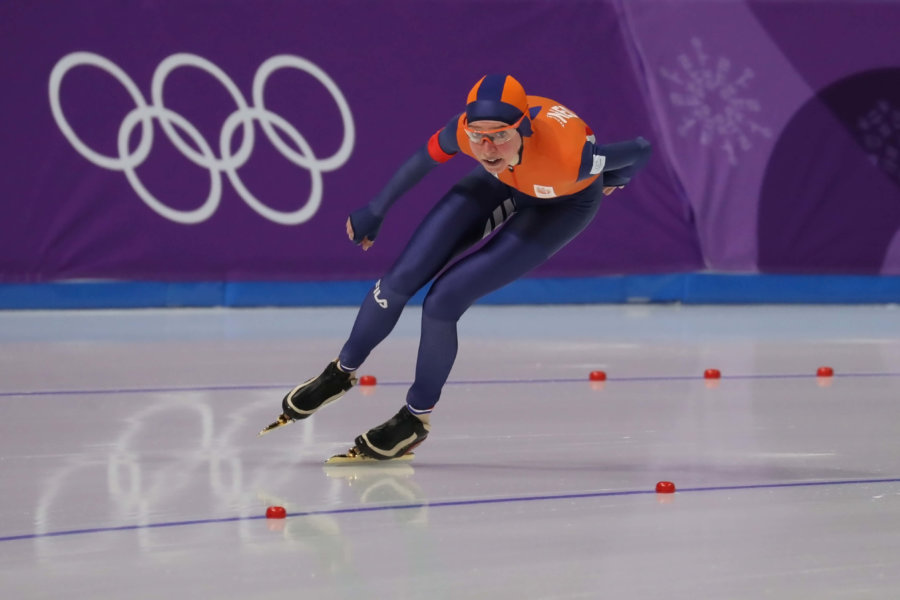Nederlandse Statistiek in The Wall Street Journal - VVSOR - VVSOR

Netherlands Society for Statistics and Operations Research | Dutch
Zelfs The Wall Street Journal toonde zich onlangs opgetogen over het eclatante succes van de Nederlandse schaatsers en schaatssters tijdens de Olympische Winterspelen dit jaar: “The Netherlands cemented their place as the greatest speedskating nation on earth by leaning on university statisticians.”, “It’s Winter Olympics Moneyball (…) for the team with the most money and talent. (…) the Dutch took 23 of 36 possible medals in Sochi and, as of Friday morning, grabbed 13 of 33 here, including six of the 11 available gold.”, “Leaning on statisticians at the University of Groningen, the team developed an algorithm to tell the coaches how best to deploy their squad of 10 skaters across the 14 Olympic medal events to maximize their chances of winning gold.”, aldus Joshua Robinson in The Wall Street Journal van 25 februari jongstleden.
Het werd uiteindelijk acht keer goud, zes keer zilver en zes keer brons voor Nederland met een vijfde plaats in de medaillerangschikking voor landen. De Nederlandse statistici, die de KNSB hebben ondersteund bij het opstellen van de Olympische selectieprocedure zijn Gerard Sierksma van de Rijksuniversiteit Groningen en Bertus Talsma van ORTEC/Sports. Het volledige The Wall Street Journal-artikel staat hieronder.
Zie ook https://www.thiscomplexworld.com/ortec-helps-dutch-gold-rush-sotsji.

By Joshua Robinson
Febr. 23, 2018 445 a.m. ET
“We needed a kind of order,” said Arie Koops, the technical director for the Dutch national speedskating program. “So how would we do that?”
In classic Dutch fashion, they chose to devise the most rational solution they could imagine. Leaning on statisticians at the University of Groningen, the team developed an algorithm to tell the coaches how best to deploy their squad of 10 skaters across the 14 Olympic medal events to maximize their chances of winning gold. It bakes in two years’ worth of results, calibrates them for location, since ice conditions and altitude affect speedskating times, and compares them to other results around the world.
The answers that the computer spits out form the basis of the Dutch strategy. It’s Winter Olympics Moneyball, only for the team with the most money and talent.
Over and over, the skaters have proved the model right. Since refining it ahead of the 2014 Olympics, the Dutch took 23 of 36 possible medals in Sochi and, as of Friday morning, grabbed 13 of 33 here, including six of the 11 available golds.
“We thought it’s never possible to do something like that again” after Sochi, Dutch speedskater Anouk van der Weijden said. “And it’s happening again. That’s really weird.”
The Dutch might be the only ones who don’t think a repeat performance makes perfect sense.
No other country is so successful at just one Olympic sport as the Netherlands. South Koreans are the undisputed kings of shorttrack, but their history with the sport isn’t as long—it only became an Olympic event in 1992. The Norwegians blow away the competition in cross-country events, but they are also good at other things. But the Dutch? They know their Olympic gold mine is inside the speedskating oval.
As of Friday morning, 118 of their 127 all-time Winter Olympics medals have been in long-track speedskating. Only one Dutch person, a snowboarder in Sochi four years ago, has ever won the country a Winter Games medal without wearing skates And, because speedskating also puts more medals on offer than any other sport, the Netherlands inevitably soar up the medal standings. Sitting on 17, they were ahead of winter powerhouses like Austria and Switzerland. “Now the competition is harder than in Sochi,” Koops said. “But still, we’re doing our job.”
The heaviest lifting occurred before anyone even got on the plane to South Korea, back at the Netherlands’ Olympic trials. Most countries would simply take the top one or two skaters at a given distance, but the Dutch see that as hopelessly inefficient. Using the matrix, they handicap every Olympic race to figure how where they can best trounce the competition.
This wouldn’t be necessary if the Dutch didn’t already have the deepest well of talent in world speedskatin g. With elite performers to select from at every event, they consider themselves to be the Winter Olympics’ equivalent of USA Track and Field, the self-styled “Hardest Team to Make.”
“There are a lot of speedskaters from the Netherlands competing here right now,” van der Weijden said. “But there are a lot of speedskaters at home, who are just as good as some of them here.”
That’s why their Olympic trials, held every four years in the week between Christmas and New Year’s, become the Netherlands’ most significant speedskating battle. The five days of cutthroat racing inevitably culminate in a 10,000-fan sellout for the final session, all to see who makes the cut for what the Dutch call the Order of Selection. Plenty of Olympic medalists don’t. “If you’re not good at that moment, the end of December, then you’re out,” said van der Weijden, a specialist of the longer distances. “All the training, four years, is already done even before you can go to the Olympics. It’s even more important than this competition.”
Write to Joshua Robinson at joshua.robinson@wsj.com
Copyright copy;2017 Dow Jones; Company, Inc. All Rights Reserved This copy is for your personal, noncommercial use only. To order presentation-ready copies for distribution to your colleagues, clients or customers visit https://www.djreprints.com.